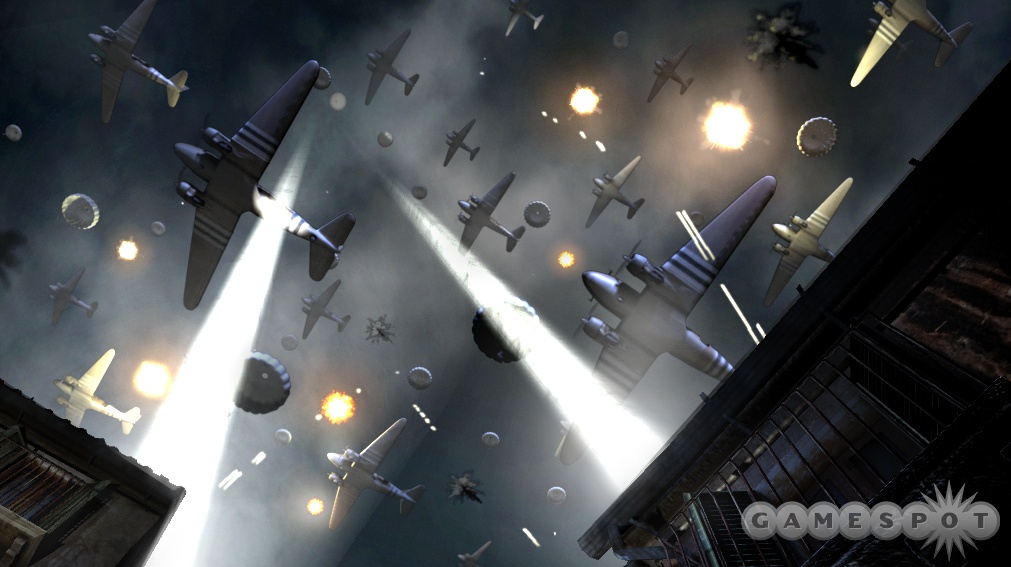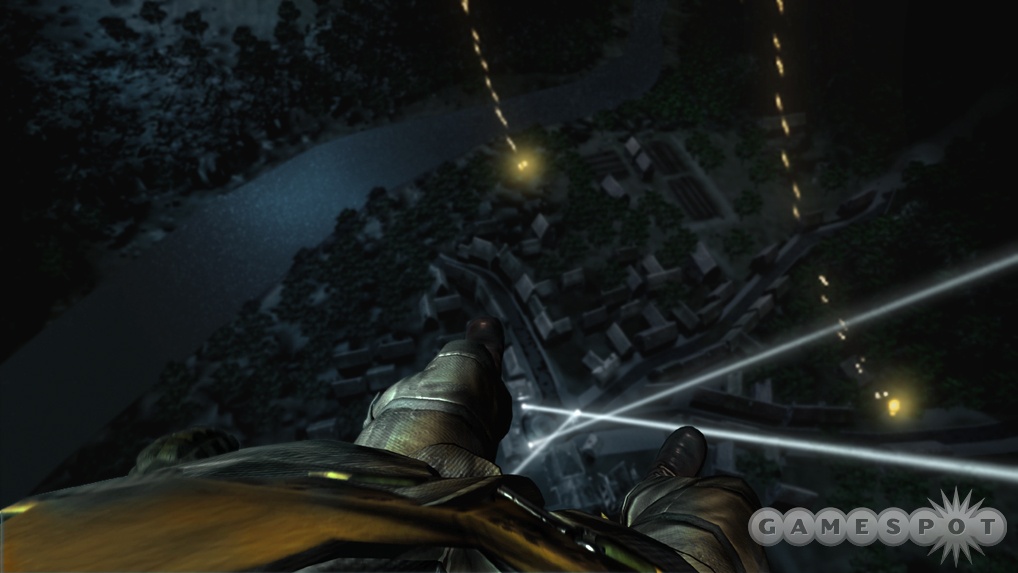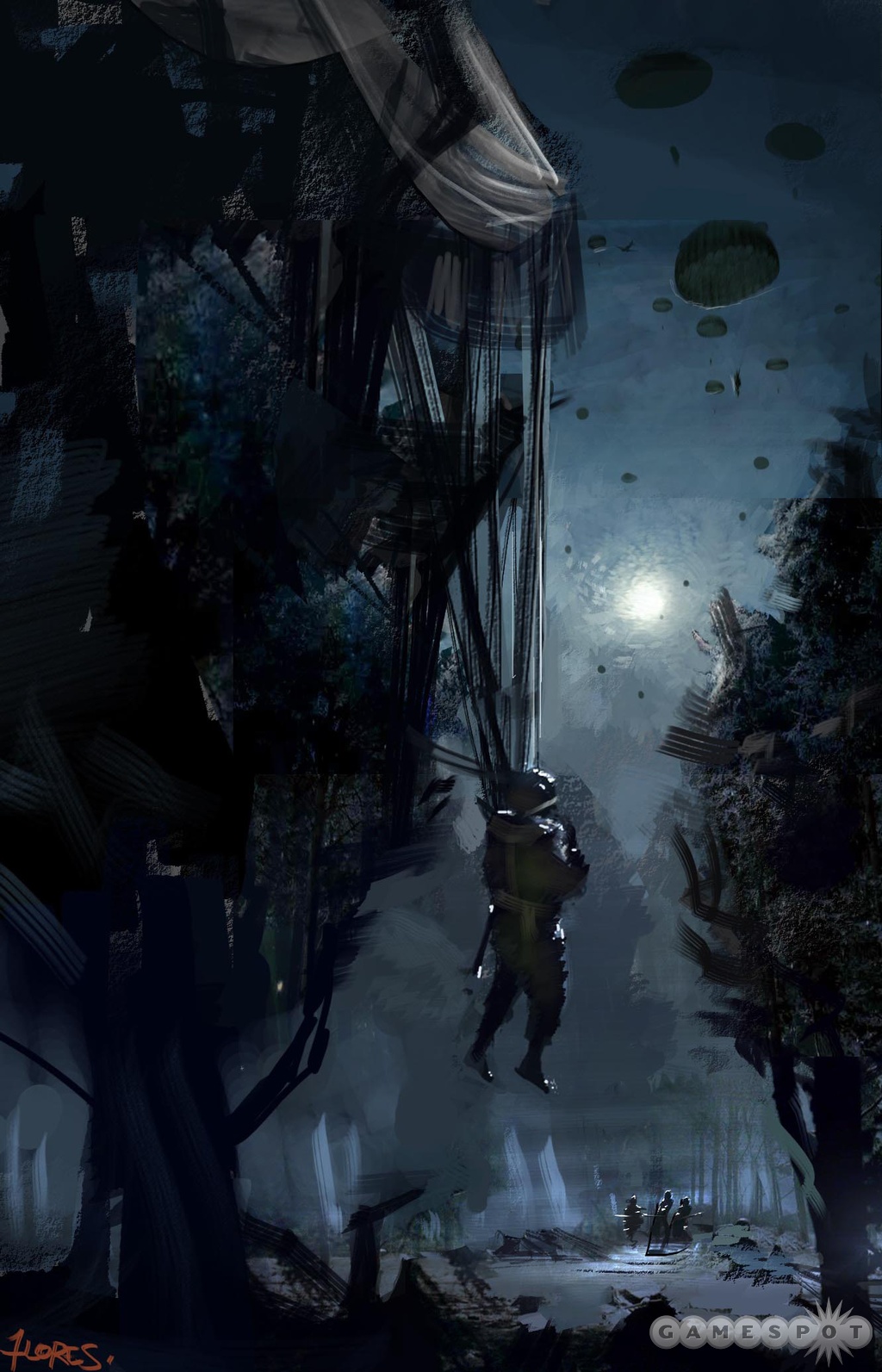Medal of Honor Airborne Exclusive Q&A - Flying the Unfriendly Skies
Executive-producer Patrick Gilmore fills us in on the development status of the latest entry in the long-running World War II series.
Medal of Honor Airborne represents a transitional period for EA's extremely long-lived World War II shooter series. For one, the game moves the action to a place that Medal of Honor has never been before: the sky. Just as important, Airborne is the first game in the series to pop up on next-gen consoles, as it's currently in development on the PlayStation 3 and Xbox 360, in addition to current systems. Here to tell us how the game is shaping up is executive-producer Patrick Gilmore.

GameSpot: How is development on the game going?
Patrick Gilmore: Fantastic--we’re very excited to be developing Medal of Honor Airborne, and it’s especially exciting to be bringing this to the next generation. Naturally, there are always challenges working with new technologies, but we are making great headway.
GS: How do the current- and next gen-games differ from each other?
PG: Medal of Honor Airborne will follow the same story arc of the 82nd Airborne division on each platform. The core concept behind Medal of Honor Airborne is strong enough to support all platforms. Additionally, the next generation of consoles will allow us to simultaneously create content suitable for all platforms. More clearly, we no longer have to worry about reducing fidelity in order to fit on a console.
The best way to develop the next MOH is to take advantage of what each platform offers. Given this, we will be designing the current-gen and next-gen products (including PC) with separate teams, each focusing on the strengths of each platform. We will be getting into more detail on platform differentiation closer to ship.
GS: Why did you choose to go with the airborne experience for this MOH?
PG: We worked hard to develop a unifying concept that could be a common theme through all the missions. The goal was to give the gameplay a more specific character to identify with. The idea of jumping out of a plane into each of the operations ignited enormous excitement among the team members and spawned a unique set of innovations. We specifically chose the 82nd because it has the most lasting legacy and is currently the largest parachute force in the free world.
The US was the last country to field an airborne force, and enormous mistakes were made in some of the initial deployments. If not for the bravery and determination of the men involved, the whole concept of an American Airborne could have been a disaster. As it turned out, the men of the 82nd helped begin a lineage that survives and defines heroism to this day. It's the ultimate underdog story--at the end of which our heroes prevail--and that's totally the stuff of Medal of Honor.
GS: How are you juggling your stated intention of creating a "cinematic story-driven game with the freedom of nonlinear missions in an FPS environment"? Doesn't storytelling require a certain level of structure and linearity?
PG: We want to very clearly tell the player what he needs to do, but leave it up to the player to figure out how each task can be accomplished. We are preserving the progression-based structure of traditional linear games, but are focusing on creating encounters that are more nonlinear, with an emphasis on player choice. Each encounter in MOH Airborne has one main objective, but it will be designed to be completed in several different ways.
The choices made in the air will dramatically affect what kind of gameplay occurs once you hit the ground. The player will have full control of the parachute and will be able to drop into the encounter wherever they choose--this allows missions to play out in a new way every time.
As for the story told as a result--that will be completely unique to the player.

GS: How much variety will there be in the missions, and how will the game break down in terms of playtime?
PG: In each mission there will be encounters in the air (airdrop) and on land. Most missions cover an enormous area (measured in miles), although you will not cover every square inch of the operation area. We are still playing around with mission objectives--the current thinking is, going into a drop, the player will have intelligence and a mission, but the specifics of that mission only reveal themselves as you move about the world. For example, discovering a German communications center will fill in a subobjective in your log book and mission screen.
So to that extent, missions will be dynamic--the player will have good intel going in, but will only get the full dimension of the mission as they engage and recon. The encounters will be varied to suit the Airborne subject matter.
GS: What can you tell us about the "jump," and how it will affect your experience in the game?
PG: We're going for as seamless an experience as possible, from the airfield briefing to the plane, to the jump itself. As a player, you control everything a soldier would control--the actual exit from the plane, and the drop from that point forward. From the air, you will likely be able to see every objective in the operation, but the extent to which you can reach them will depend upon your exit point and the altitude of the jump.

Apart from that, it is entirely up to the player to read the battlefield beneath him. He can go for a tower for sniping opportunities, steer after his squad to rally quickly on the ground, land in the heart of his primary objective for a direct (and usually extremely difficult) assault, land on rooftops, crash through windows, in alleys, on top of walls, and on and on. The entire space is playable.
GS: What can we expect from the weapon customization in the game?
PG: We're delivering a whole feature set for weapons that lets players focus on and improve their favorite weapons in their arsenals. It actually goes beyond the weapons themselves, to your virtual body, allowing you to add additional ammo capacity, shoulder holsters, and weapon slings, which let you carry more, for better options in battle.
Sticking with our commitment to historical accuracy and authenticity, all of our weapon upgrades in MOHA were thoroughly researched to provide a truly authentic experience. Allied soldiers did a lot of weapon modification. They filed down firing pins to improve firing rates, added compensators and special grips, slings, and pads that added to weapon stability and accuracy, and even duct-taped extra cartridges over or under weapons to places they could access quickly, for faster reloads and more-effective close combat.
GS: When you say you're "utilizing the latest procedures and technologies to demonstrate truly believable humans within the gaming environment," what does this apply to?
PG: We're raising the bar on human behaviors and character. We are focusing on a variety of revolutionary technologies to make our humans look, sound, and feel way more believable than in any game yet. Already, tests we've done on the PS3 are showing that we can do some very cool things with textures and animation that make our humans look strikingly real.

Beyond these innovations, I think you can look to the multiprocessor power of next-gen hardware and expect more-robust physics and dynamics sims; light, shadow, and occlusion playing a much greater part in gameplay; and a much more-sophisticated NPC intelligence.
GS: What can you tell us about the game's online modes?
PG: Online will be included, and we consider it a major aspect of the game--we will be revealing more details about this feature in the coming weeks.
GS: Any plans for downloadable content?
PG: We are currently working on plans for this and will reveal more information closer to ship.
GS: Thanks, Patrick.
Got a news tip or want to contact us directly? Email news@gamespot.com
Join the conversation